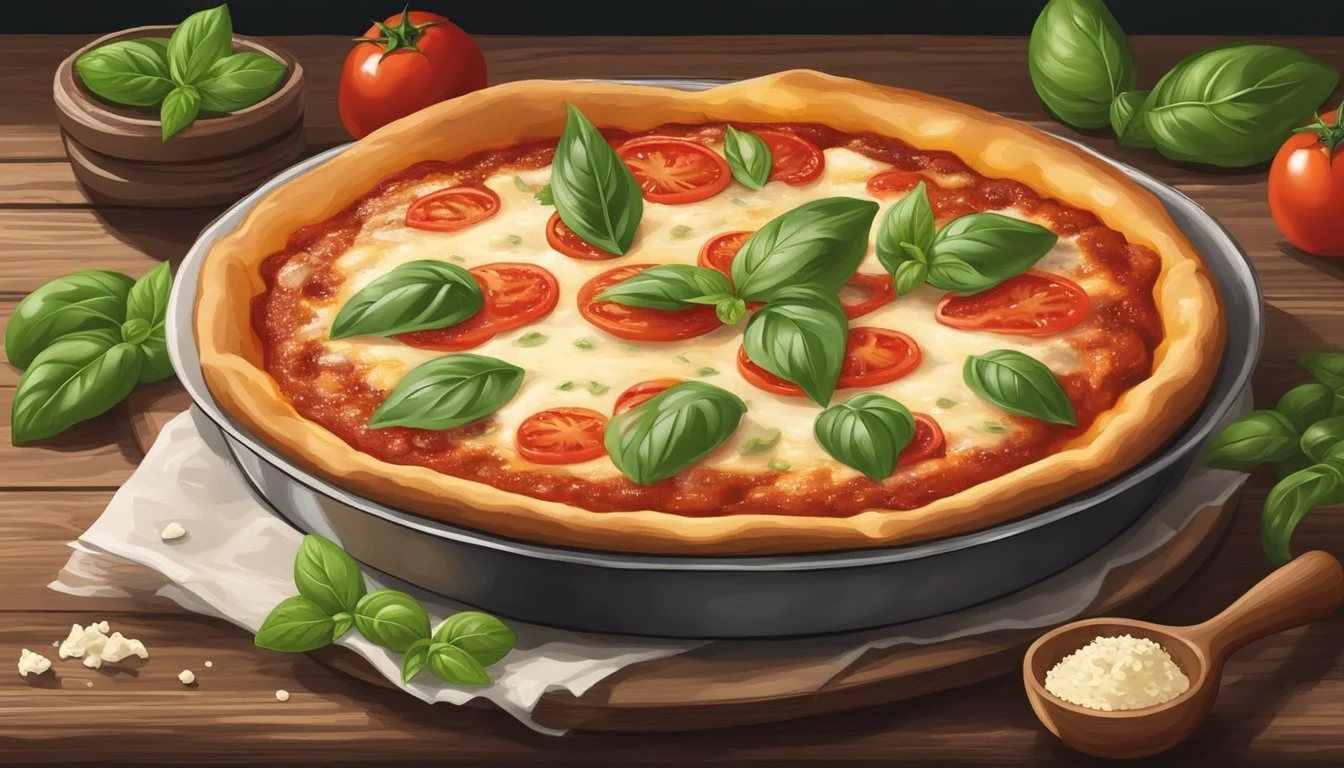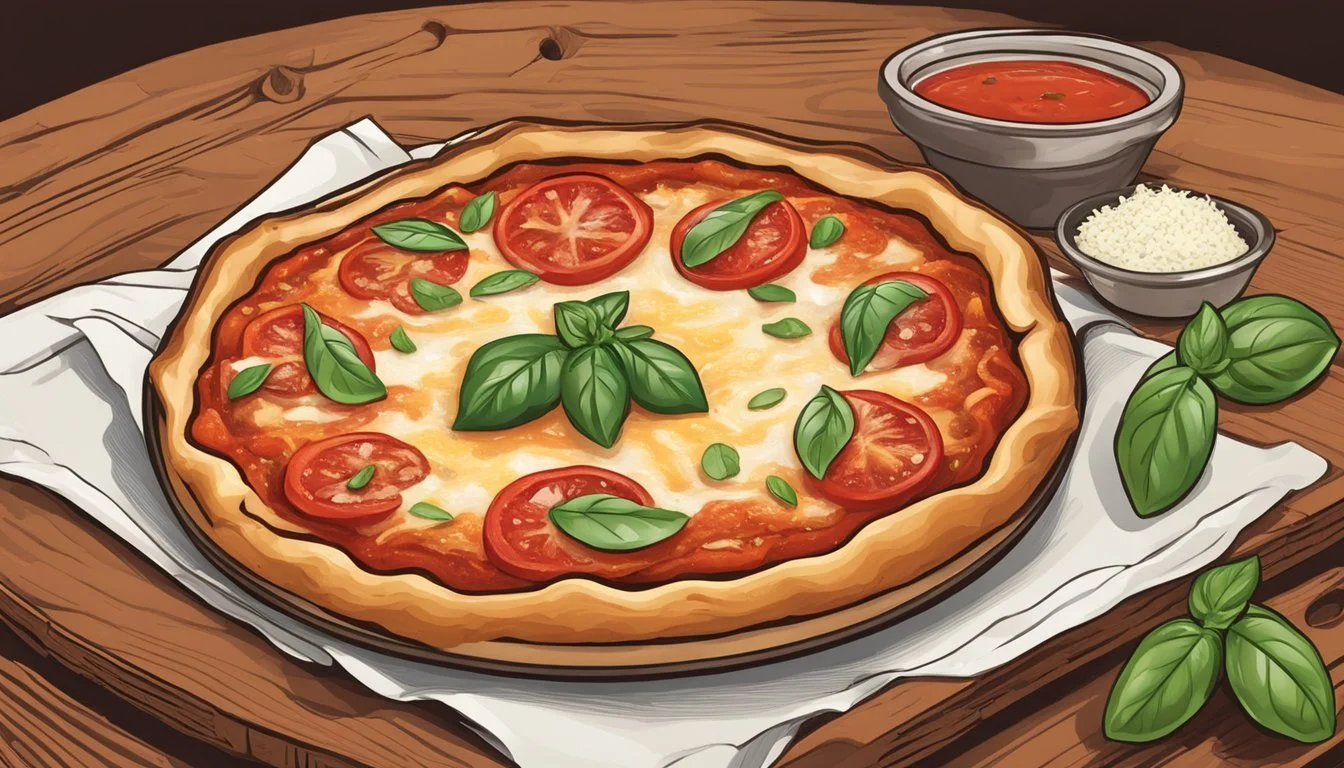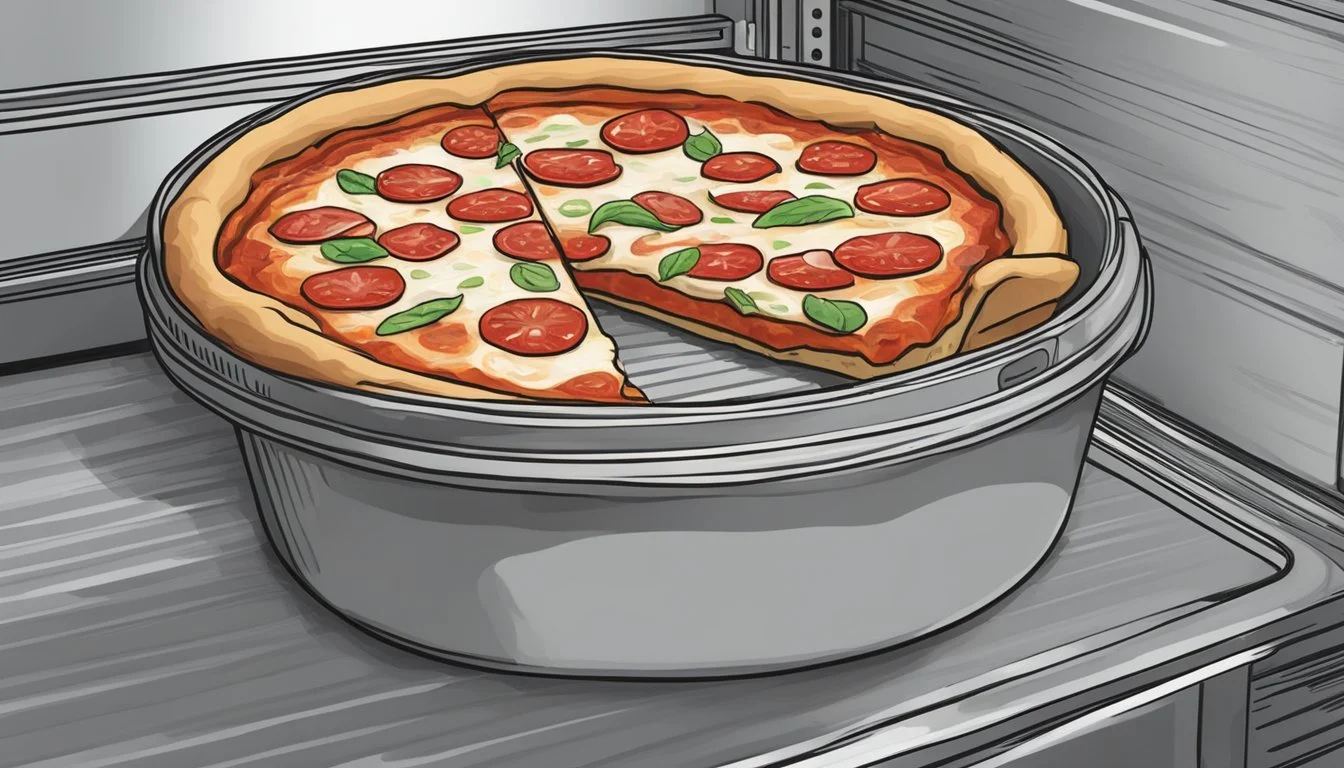How Long Does Deep Dish Margherita Pizza Last?
Storage Tips and Shelf Life
When it comes to enjoying a delicious slice of Deep Dish Margherita Pizza, knowing how long it lasts is essential for optimal flavor and safety. Generally, a freshly baked Deep Dish Margherita Pizza can last about 3 to 4 days in the refrigerator when stored properly in an airtight container. The combination of ingredients like fresh basil, mozzarella cheese, and tomato sauce ensures a savory experience, but these components also dictate the pizza's shelf life.
For those who want to extend the life of their pizza, freezing is an option. When stored in the freezer, Deep Dish Margherita Pizza can maintain its quality for up to two months. It's important to let the pizza cool completely before wrapping it tightly in plastic wrap and aluminum foil. This method helps preserve the unique flavors and textures of the dish.
Understanding the lifespan of these ingredients can help prevent food waste and ensure you're always enjoying your pizza at its best. Whether it’s a homemade creation or a store-bought delight, proper storage plays a critical role in maintaining the deliciousness of your Deep Dish Margherita Pizza.
Understanding Deep Dish Pizza
Deep dish pizza is iconic for its thick crust and generous toppings. Originating in Chicago, this style stands apart with its unique preparation and ingredients.
Origins and Characteristics
Deep dish pizza was created in Chicago in the early 1940s. Pizzeria Uno, founded by Ike Sewell, is often credited with its invention. This pizza type is known for its substantial crust, which is more bread-like than traditional Italian pizza.
The crust is formed in a high-edged pan, giving it a pie-like appearance. The robust base supports a thick layer of cheese, various toppings, and a rich tomato sauce. Unlike its thin-crust counterparts, deep dish pizza is typically baked for a longer time at higher temperatures to ensure even cooking.
Key Ingredients
The dough for deep dish pizza is typically made from all-purpose flour and sometimes semolina flour for added texture. Essential components include yeast, water, salt, and olive oil. Some recipes also incorporate cornmeal to enhance the crust's crunch.
A food processor may be used to mix the ingredients efficiently. After kneading, the dough is divided into balls and allowed to rise. The toppings always start with a layer of cheese directly on the dough, preventing it from overcooking. Vegetables, meats, and other toppings are added on top, followed by a thick tomato sauce, spread evenly to finish.
Creating the Margherita Masterpiece
Crafting a Deep Dish Margherita Pizza entails a careful balance of the perfect dough, flavorful layers, and fresh herbs, creating a memorable culinary experience.
The Deep Dish Dough Process
Creating a robust dough is crucial for the deep dish Margherita pizza. Start with bread flour, which contains 11% or more protein, to achieve a chewy texture. Begin by mixing flour, yeast, salt, and water. Knead the mixture until smooth and elastic, which takes about 10 minutes. This develops the gluten, ensuring a strong but airy crust.
Allow the dough to rise in a warm place for about 1-2 hours, until it doubles in size. To prepare the baking dish, generously coat it with extra virgin olive oil and a sprinkling of cornmeal. Press the dough into the pan, ensuring it reaches the sides. The goal is an even thickness for a consistent bake.
Layering Flavors
A notable characteristic of Margherita pizza is its layers of flavors. Begin with San Marzano tomatoes, known for their rich taste and lower acidity. Drain and crush the tomatoes to form the base of your tomato sauce. Spread a thin layer of this sauce on the dough, leaving a slight border.
Add sliced fresh mozzarella cheese, ensuring an even distribution. It melts beautifully, creating a creamy texture. Sprinkle Parmigiano-Reggiano or Parmesan cheese for an added depth of flavor. Garlic, minced finely and sautéed, enhances the dish with its aromatic properties. Bake at a high temperature until the crust is golden brown and the cheese bubbly and slightly browned.
Herbs and Garnishes
Herbs play a pivotal role in bringing the Margherita pizza to life. Fresh basil leaves, scattered generously post-baking, impart a sweet, earthy essence. For additional boldness, add a sprinkle of dried oregano. The combination of these herbs complements the tomatoes and cheese spectacularly.
Consider drizzling extra virgin olive oil over the finished pizza for a rich, peppery finish. This enhances the pizza’s moisture and prevents it from drying out. Garnish with a light dusting of Parmigiano-Reggiano for an elegant touch, paying homage to the simplicity and elegance admired by Queen Margherita of Savoy.
Baking and Final Touches
To achieve a perfect deep-dish Margherita pizza, understanding the correct baking methods and adding finishing touches is crucial. This ensures the crust turns golden brown, the cheese melts to perfection, and the toppings harmonize beautifully.
Oven Requirements
A high-temperature oven is key for deep-dish Margherita pizza. Typically, a temperature around 450°F is recommended. Preheat the oven well in advance to maintain consistent heat. Using a pizza stone can distribute this heat evenly, ensuring a crisp crust. Additionally, a baking sheet or cast-iron skillet can be used.
Tools like a pizza peel make transferring dough easier. Whether you use a store-bought dough or homemade pizza base, ensuring that the oven and tools are prepared is vital for a successful bake.
Monitoring Cook Time
Monitoring the cook time is essential to avoid overcooking. Deep-dish pizzas usually bake for 20-25 minutes. Keeping a close eye on the pizza during this period helps achieve the desired golden brown crust and melted cheese. Factors like oven type and specific dough thickness can affect timing.
If desired, rotating the pizza halfway through the bake can promote even cooking. Using a fork to dock the dough—piercing it all over—prevents bubbling, making for a perfect final texture.
The Art of Plating
Once the pizza is baked, presentation enhances the dining experience. Carefully remove the pizza using a pizza peel. Adding fresh basil leaves and drizzling extra virgin olive oil reflects the colors of the Italian flag and enhances flavor.
Serve the slices promptly to maintain crispness. Garnishing with basil just before serving ensures the leaves remain vibrant. The rolling pin ensures a well-shaped dough, but it’s the final touches that truly make the visual appeal.
Attention to detail in both baking and presentation transforms a simple dish into a restaurant-quality Italian pizza experience, making the effort worthwhile for any enthusiastic home chef.
Proper Storage and Shelf Life
To enjoy your deep dish Margherita pizza at its best, it's essential to store it correctly and understand how long it can last before losing quality. This section provides guidelines on refrigeration and effective reheating methods.
Refrigeration Guidelines
Deep dish Margherita pizza should be cooled to room temperature before refrigerating to avoid condensation, which can make the crust soggy. Store leftovers in an airtight container to maintain moisture and flavor. If wrapped individually, slices cool evenly and avoid sticking together.
Storage Method Shelf Life Refrigerator 3-4 days Freezer 2-3 months
Check for signs of spoilage like an off smell or discoloration before consuming refrigerated pizza. Always opt for the shortest storage time for the best quality.
Reheating for Best Quality
For the crispiest crust, the oven is the best reheating method. Preheat to 375°F (190°C). Place pizza slices directly on the oven rack or a baking sheet for 10-15 minutes. This method restores the original texture and taste.
If using a microwave, place a cup of water inside to prevent the crust from becoming chewy. Microwave on high for 1-2 minutes, checking periodically.
Using a skillet on medium heat for approximately 10 minutes with a lid can retain moisture while crisping the underside, offering another excellent option for reheating.
Variations and Related Delights
Deep-dish Margherita pizza can be more than its traditional form. Diverse toppings and alternative recipes create unique dining experiences, offering zesty and satisfying variations.
Exploring Different Pizza Toppings
Many pizzerias and home chefs enjoy experimenting with toppings. Pesto is an excellent alternative to traditional tomato sauce, offering a fresher, herbaceous flavor. Roma tomatoes add a robust, zesty kick to the pizza. Including various types of cheese such as provolone or gouda can add interesting textures and flavors.
For meat lovers, options like sausage or pepperoni can be added to deep-dish Margherita to make it heartier. Incorporating these elements while maintaining the classic ingredients ensures a balance between tradition and novelty.
Alternative Pizza Recipes
Exploring other pizza recipes can be equally delightful. Pesto pizza, for instance, relies on a pesto sauce base rather than traditional tomato sauce, often complemented with toppings like fresh mozzarella and sun-dried tomatoes.
Breakfast pizza is another innovative alternative, where ingredients like scrambled eggs, bacon, and spinach replace typical pizza toppings.
Creating a homemade deep-dish dough can be a satisfying endeavor. Recipes often suggest mixing flour, yeast, water, salt, and olive oil, letting it rise to achieve that perfect base. Combining classic elements of Margherita with these creative twists can result in a delightful, new pizza experience.







